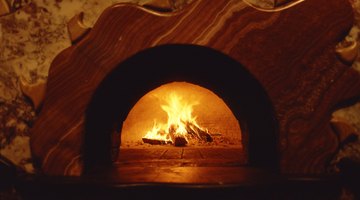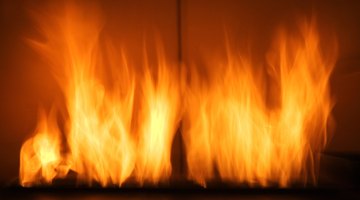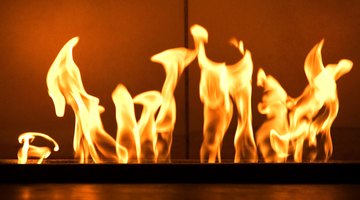Instructions for Brick Ovens
If you like brick-oven-baked pizza or bread, you may have wondered whether you need the money and space to purchase a commercial brick oven to replicate the experience at home. While you certainly could purchase a commercial brick oven for your home, you can also build your own brick oven.

To build a brick oven you can purchase your own materials and follow a purchased pattern, or purchase ready-to-install components. Central to the project is understanding how brick ovens work.
How a Brick Oven Works

Few of us have ever cooked in a brick oven. We're used to modern ovens where we select the temperature, place the food inside, wait the appropriate time and then eat our cooked food. A brick oven works differently. A brick oven requires much longer to preheat before use, often as long as two to three hours. This is because the walls of the brick oven are very thick, balancing the need for maximum heat retention against the amount of time required for preheating. The preheating time will reward you with an oven that is much hotter than your home oven: Most home ovens have a maximum temperature of 500 degrees Fahrenheit, while brick ovens routinely reach temperatures between 600 and 1,000 degrees Fahrenheit. The intense dry heat of a brick oven has a very different effect on food.
Air Circulation

A brick oven consists of a cooking chamber with a flue near the front. The flue or chimney allows the hot air to escape during cooking. When you light the brick oven, you will build the fire near the front of the oven. As the fire continues to burn and heat the oven, it is pushed to the back of the oven. The heat of the fire will draw fresh air in through the opening of the oven and circulate the heated air toward the front of the oven across your cooking food where it will then naturally rise through the flue and escape. To facilitate air circulation, most brick ovens have a domed interior and relatively small front opening.
Construction Basics

A brick oven should be constructed on a heat-resistant base that will raise the cooking level for easier use and usually provide an area for storage. The interior of the oven itself can be built with regular brick or firebrick, depending on your budget. You can build a simple oven using no mortar or an elaborate structure with domed ceiling and opening, depending on your skills and budget. The interior height of the oven should be greater than the size of the door, with a ratio of 1:1.6 as measured to the interior ceiling of the oven (a 10-inch door opening and 16-inch interior height, for example). The oven itself will require insulation and must be constructed of materials designed to endure the intense dry heat the oven will produce. The flue should be located near the door of the oven. Commercial flues are readily available, or you can construct your own. The first few fires in your oven should be of moderate heat; these will dry any moisture from the bricks or other materials used during construction. Always use hard wood in your brick oven, and observe proper safety precautions when cooking.
Cooking in Your Brick Oven

Pizza is easily and quickly cooked in a brick oven. After your oven has preheated, push the fire to the rear of the oven. Using a wooden peel, place your pizza directly on the floor of the oven near the front. Your pizza will cook quickly. Remove it using the peel when the crust is done and the toppings are bubbly.
To cook bread in your brick oven, remove the fire. Wipe the floor of the oven with a damp cloth. Place your loaf of bread directly onto the floor of the oven. The radiant heat will bake your bread. The bread is done when it has browned and tapping it on the bottom produces a hollow sound.
Because your brick oven will retain its heat for some time, you can cook a number of foods inside your brick oven.
References
Writer Bio
Stephanie Crumley Hill is a childbirth educator who for more than 20 years has written professionally about pregnancy, family and a variety of health and medical topics. A former print magazine editor, her insurance articles for “Resource” magazine garnered numerous awards. She holds a Bachelor of Arts in English from the University of Georgia.
Photo Credits
- Jupiterimages/Comstock/Getty Images
- Jupiterimages/Comstock/Getty Images
- Jupiterimages/Comstock/Getty Images
- Thinkstock/Comstock/Getty Images
- Thinkstock/Comstock/Getty Images
- Jupiterimages/Comstock/Getty Images
More Articles



